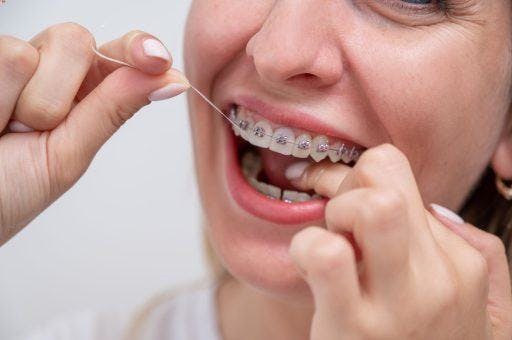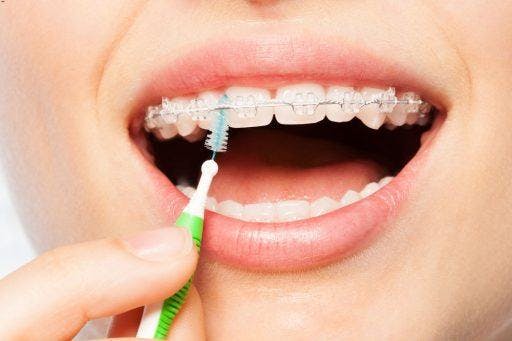For many, learning how to floss effectively is challenging enough without worrying about orthodontic devices. How do you get around fixed appliances like braces or permanent retainers? What about clear aligners? Thankfully, there are techniques that make the process less daunting. Try them out to see the difference they can make in your oral hygiene routine!
Tooth Flossing Techniques for Fixed and Removable Appliances

Flossing is just as critical for oral health maintenance as toothbrushing. It’s the best way to clean the spaces between teeth where food particles and bacteria sneak in. That buildup can lead to issues like gum disease and tooth decay.
When wearing fixed appliances, the attached brackets, wires, and elastics can create more opportunities for bacterial growth. They also add a layer of difficulty to cleaning since you must adjust your methods to work around them. Meanwhile, removable appliances are easy to pop off when it’s time to floss. This can make them a lifesaver for people who want to address misalignment but have concerns about interdental cleaning while in treatment. Aligners allow you to go about your routine as usual!
Do you want to know how to floss properly regardless of your orthodontic device? Here are a few techniques that help ensure you get it right.
Use waxed floss.
Waxed and unwaxed floss get the job done. However, the former might be better for those with braces or tightly packed teeth. Since a thin layer of wax coats the material, it glides more smoothly through the spaces. The wax coating also prevents fraying or shredding during use. Waxed floss is also less abrasive on sensitive gums.
When you have braces, sliding the floss between wired teeth is like threading a needle – a time-consuming headache. So, pick up an orthodontic floss threader to minimise frustration. It’ll allow you to pull the floss through your teeth and reach your gumline despite all the wires.
Try alternative tools.

If dental floss proves too tricky to master, you have other options. You can supplement with interdental brushes. These tools look like miniature bottle cleaners, affixed with tiny, soft-bristled brush heads. They’re a cinch to manoeuvre under tight braces wires.
Electric flossers, a.k.a. oral irrigators, are a slightly higher-tech solution. They direct steady, pressurised pulses of water between the teeth, rinsing away food particles, plaque, and other debris.
Cut enough floss and wrap each end around your fingers.
Should you decide not to give up on traditional floss, it helps to master the setup. Prepare approximately 30-45 centimetres of floss so you have enough room to control the string. Don’t be stingy! You also need enough floss to clean every nook and cranny effectively.
If you’re using a floss threader, this is when to bring it out. Pull your floss through the eye of the threader, then insert its pointy end under your braces’ wire. Once tucked in, gently tug at the floss to form a loop. Wrap the ends of the floss around your index fingers, using your thumbs to assist with movement. Repeat with the rest of your teeth.
Gently slide the floss up the gumline.
Rub the floss along the side of each tooth using a gentle up-and-down motion. Make sure to reach just under the gumline to remove any stubborn plaque from the area. But be careful not to snap, force, or drag the floss; otherwise, you can cut or bruise sensitive gum tissue.
Keep practising.
The only way to get better at flossing is to keep doing it. How many times a day should you floss? The Australian Dental Association (ADA) recommends interdental cleaning at least once per day, but those with gum disease may need to do it more often. That means you have plenty of opportunities to refine your approach!
Some people hesitate to floss because their gums bleed. The ADA emphasises that this shouldn’t happen with healthy gums. If flossing leads to bleeding, you may be dealing with inflammation caused by plaque buildup. That’s a sign you should be flossing more consistently. Eventually, your gums will heal, making the experience less painful. But if you notice continued bleeding, consult your dentist.
Knowing how to floss correctly is an invaluable skill for proper oral care, especially when wearing orthodontic appliances like ClearCorrect aligners. Follow these tips, and you’ll be flossing like a pro in record time.
References:
Cleaning between the teeth | Teeth.org.au | How To Floss Well. (n.d.). Teeth.org.au.
Flossing with Braces. The Orthodontists.
How to use dental floss with braces. Orthodontics Australia.



